Végétalisme historique / Historical Veganism
The French were 20+ years ahead of the British in creating the names – le végétalisme – végétalien – végétalienne – ……for what Dorothy & Donald Watson termed – veganism – vegan – in 1944.
Here we will give some tasters of French veganism going back to the early 20th Century. Most of the links in this blog post go to French sources.
We will also present Jean Labat AKA Jean Godec to our English speaking friends. He was a pioneering French vegan. He was active from the end of WW1 – until his death in 1938. He worked with George Butaud, Sophia Zaïkowska, Louis Rimbault & others. We will share some of his photographs & his thinking. But first, his premature end…… – a rather grim start to today’s blog post……
Note
The places mentioned in this blog post – Vaux (Aisne) & Bascon (Aisne) – are neighbouring hamlets / rural areas in the vicinity of Château-Thierry, a French commune situated in the department of the Aisne, in the administrative region of Picardy and in the historic Province of Champagne. This is to the North-East of Paris.
Luynes – is a commune in the Indre-et-Loire department in central France. This is to the South-West of Paris.
So, an anarchist commune which was partly vegan started in Vaux circa 1903. Then it moved a few hundred metres to Bascon by 1917 & became fully vegan. Then some of the members relocated to the Terre libérée land close to Luynes from 1923.
They also collectively managed France’s first vegan restaurants in Paris & in other cities.
Source
………………………………………………………………………………………………………
Savage Murder in a Naturist Camp
Sunday 26 June 1938 – NEWS ARTICLE
A savage murder has been committed in a naturist and vegetarian commune in Bascon, near Château-Thierry.
This commune was led by a certain Jean Godec, aged fifty six, whose real name was Jean Labat.
He had become friends with the sister of one of his followers, Dragolioub Ilitch the Yugoslav, whom he had recently expelled from the commune.
Yesterday, around 4, the Yugoslav man went to Godec’s hut armed with a potato hook. Disarmed, he then grabbed a log and with a humongous savagery he went at him fiercely, crushed his head, after which he buried his victim.
As soon as the crime was discovered, members of the commune called the gendarmes. They arrested the murderer, who did not resist.
Correction – actually the commune at Bascon (Aisne) was not vegetarian – the members practiced – ‘le végétalisme’ (veganism).
………………………………………………………………………………………………………
Story originally published in –
Journal des débats politiques et littéraires – Dimanche 26 Juin 1938
Original report – here.
Sauvage assassinat dans une colonie naturiste
Un sauvage assassinat a été commis dans une colonie naturiste et végétarienne, à Bascon, près de Château-Thierry.
Cette colonie était dirigée par un certain Jean Godec, âge de cinquante-six ans, lequel se nommait en réalité Jean Labat.
Il était devenu l’ami de la sœur d’un de ses adeptes, le Yougoslave Dragolioub Ilitch, qu’il avait fait récemment expulser de la colonie.
Hier, vers quatre heures, le Yougoslave se présenta devant la cabane de Godec armé d’un croc à pommes de terre. Désarmé, il s’empara d’une bûche et avec une sauvagerie énorme s’acharna sur son adversaire, il lui mit la tête en bouillie; après quoi, il enterra sa victime.
Le crime découvert, des membres de la colonie firent appel aux gendarmes qui arrêtèrent le meurtrier, lequel n’opposa aucune résistance.
Note
The translations of the main newspaper article & the set of 7 postcards are by Vincent Berraud – his Facebook Page & his blog.
………………………………………………………………………………………………………
Looking at Végétalisme – Wiki 
Postcard from the – Ernest Bell Library
After the war (WW1), Louis Rimbault had the idea to create a vegan community with George Butaud and Sophia Zaïkowska which came to life as a vegan school at Bascon in the Aisne region. In 1923, he announced his idea in the ‘Néo-Naturien‘ journal. This project became / developed into the community Terre libérée in Luynes.
……Presented as a method of individual liberation as well as regeneration of humanity, ‘le végétalisme’ (veganism) had become a tool of anarchism in the 1920s.
………………………………………………………………………………………………………
Après guerre, Louis Rimbault a l’idée de créer une cité végétalienne avec Georges Butaud et Sophia Zaïkowska qui animent alors une école végétalienne à Bascon dans l’Aisne. En 1923, il annonce son idée dans le Néo-Naturien. Ce projet aboutira à « Terre libérée » à Luynes.
……Présenté comme une méthode de libération individuelle autant que de régénérescence de l’humanité, le végétalisme était devenu un outil de l’anarchisme dans les années 1920.
………………………………………………………………………………………………………
The project of a Vegan City
In anarchist circles, Georges Butaud and Sophia Zaïkowska were the first to build a theory of reducing individual needs as a means to overcome the logic of production and consumption. Veganism became their main workhorse. By 1917, they had founded a practical school for Veganism at Bascon in the Aisne district (at the place where they had already tried several free communities), in which Rimbault and his partner / companion Clémence participated. more in French.
.
.
Thus Rimbault Louis decided to take action…: in 1923, he announced in Le Néo-Naturien his idea of founding a Vegan City. This project will be born as “Terre libérée” in Luynes……
………………………………………………………………………………………………………
Le projet d’une cité végétalienne
Dans les milieux anarchistes, Georges Butaud et Sophia Zaïkowska sont les premiers à ériger en théorie la réduction des besoins individuels comme moyen de s’affranchir de la logique de production et de consommation. Le végétalisme devient leur principal cheval de bataille. Dès 1917, ils animent une école pratique végétalienne à Bascon dans l’Aisne (à l’endroit même où ils avaient déjà tenté plusieurs milieux libres), à laquelle Rimbault et sa compagne Clémence participent. more in French.
.
.
C’est ainsi que Louis Rimbault décide de passer à l’action à son tour : en 1923, il annonce dans Le Néo-Naturien son idée de fonder une Cité végétalienne. De ce projet naîtra “Terre libérée” à Luynes, à 11 kilomètres de la ville natale de Rimbault. Durant une dizaine d’années ce dernier va multiplier écrits et réunions pour répandre ses conceptions, tout en accueillant à « Terre libérée » les adeptes de son végétalisme.
………………………………………………………………………………………………………
Terre Libérée History
The adventure began in late 1923, Louis and Clémence Rimbault had travelled around Touraine for a month to find “fruitful land “(this was late 1923). At the same time, a large public conference was held in Paris in November. Entitled “The best way to liberation” it welcomed as a speaker Han Ryner to expound the “moral liberation “, Dr. Legrain on “physical liberation”, and finally Rimbault on “Economic liberation”.
It was at Luynes, a village near Tours where they founded their Vegan City. The land situated in a place called “Le Pin”, 2.5 km from the village of Luynes, acquired for 16,000 francs at the time. Located on one of the highest locations in the countryside, the colony had ten hectares of good land (2 ha of vineyards and 6ha of cultivated meadows or arable land) on a hillside sheltered from the wind by a belt of pine woods and chestnut trees. There were many fruit trees, and a small stream passed the tip of property. There were other water sources and good water wells. more in French.
………………………………………………………………………………………………………
Terre Libérée, historique
L’aventure débute à la fin de 1923, Louis et Clémence Rimbault parcourent la Touraine pendant un mois pour trouver «la terre féconde» (fin 1923). A la même période, une grande conférence publique est organisée à Paris en novembre. Intitulée «Le meilleur chemin de la libération», elle accueille comme orateur Han Ryner pour disserter de la «libération morale», le Dr Legrain pour la «libération physique» et enfin Rimbault pour la «libération économique».
C’est à Luynes, un village proche de Tours que s’installe la cité végétalienne. Un terrain situé au lieu dit « Le Pin » à 2 km 500 du village de Luynes est acquis pour 16000 frs de l’époque. Implantée sur une des parties les plus élevées du pays, la colonie comprend dix hectares de bonne terre (dont 2 ha de vignes et 6 de terres cultivées ou prés cultivables) situés sur un coteau abrité des vents par une ceinture de bois de sapins et de châtaigniers. Il y a de nombreux arbres fruitiers et un petit ruisseau passe à l’extrémité de la propriété qui comprend en outre plusieurs pièces d’eau et un bon puits. – more.
……………………………………………………………………………………………………..
Now more about
Jean Labat AKA Jean Godec in Bascon
Born in 1882 in Poursuigues-Boucoue (Lower Pyrenees, Pyrenees-Atlantiques), died June 23, 1938 at Bascon (Aisne); photographer; militant anarchist, naturist.
Né en 1882 à Poursuigues-Boucoue (Basses-Pyrénées, Pyrénées-Atlantiques), mort le 23 juin 1938 à Bascon (Aisne); photographe; militant anarchiste naturien.
………………………………………………………………………………………………………
An original settler, Jean Labat also known as Godec, who arrived at Bascon in 1919, has left memories in the neighborhood. It was on Fridays, on the market square of Chateau-Thierry, when he photographed people who wanted it, for a few francs, and sold postcards of the colony. Because of his unkempt beard, his long hair, and the fact he was walking barefoot, simply dressed, he was nicknamed “Jesus Christ”.
He excited the curiosity of people with his theories on veganism and the harmfulness of tobacco and alcohol. ……..
A heated argument at Bascon with another settler of Serbian origin, Dragolioub Ilitch, led to his murder in 1938.
………………………………………………………………………………………………………
– from – here in French
Un colon original, Jean Labat dit Godec, arrivé à Bascon en 1919, a laissé des souvenirs dans le voisinage. Il allait, le vendredi, sur la place du marché de Château-Thierry. Il photographiait les personnes qui le désiraient moyennant quelques francs et vendait des cartes postales de la colonie. A cause de sa barbe hirsute, de sa longue chevelure et du fait qu’il se promenait nu-pieds, vêtu reès légérement, il était surnommé Jésus-Christ.
Il excitait évidemment la curiosité de tous et développait ses théories sur le végétalisme, la nocivité du tabac et de l’alcool…….
Une violente dispute à Bascon avec un autre colon d’origine serbe, Dragolioub Ilitch fut à l’origine de sa mort en 1938.
………………………………………………………………………………………………………

“Panorama Chateau-Thierry” by The original uploader was Phe at French Wikipedia – Own work by fr:Utilisateur:Pickwick. Originally from fr.wikipedia; description page is/was here.. Licensed under CC BY-SA 3.0 via Commons – https://commons.wikimedia.org/wiki/File:Panorama_Chateau-Thierry.jpg#/media/File:Panorama_Chateau-Thierry.jpg
Why Originally Bascon & Vaux – near Château-Thierry
They are 800 m apart. There had been a succession of anarchist communes here from late 1903 – source.
Why Vaux? because in this village lived a man of 69 years, Father Alphonse Boutin, who enthused at the idea of an idyllic life of communism and camaraderie, and offered his house and two hectares of land to allow new settlers to realize their common ideal, provided they participate in the experiment.
………………………………………………………………………………………………………
Pourquoi Vaux ? parce que dans ce hameau vivait un homme de 69 ans, le père Alphonse Boutin, qui, s’enthousiasma à cette idée d’une vie idyllique de communisme et de camaraderie et offrit sa maison et deux hectares de terre pour permettre aux nouveaux colons de réaliser leur idéal commun, à condition de participer à l’expérience.
More on the earlier communities – here in French.
Other French communities which practised veganism –
~ À Montreuil (1892-1893), à Vaux (1902-1907), à Aiglemont (1903-1908), à Ciorfoli (1906), à La Rize (1907), à Saint-Germain-en-Laye (1906-1908), à Bascon (1911-1951), à La Pie (1913-1914), à La Ruche (1904-1917), à Choisy-le-Roi… vont naître des lieux hors normes baptisés Commune anarchiste, Colonie libre de solidarité fraternelle, Essai, Phalanstère, Milieu libre… Parfois simples lieux de vie communautaire, ces expériences peuvent se développer autour de coopératives ouvrières, d’écoles libertaires, de journaux militants. Selon les endroits, on y pratique le végétarisme, le végétalisme, le naturisme, l’amour libre. Souvent les regroupements sont affinitaires, mais pas toujours. ~ – more.
………………………………………………………………………………………………………
The Ernest Bell Library set of Jean Labat’s 7 postcards – circa 1925
We acquired a copy of postcard #5 in 2014. We then noticed a copy of postcard #1 in this Italian blog post about Bascon.
After much searching, we located this complete set of 7 postcards in Portugal this year & purchased them.
Originally purchased from Jean Godec, circa 1925, in the market square of Chateau-Thierry.
We are very happy that someone carefully preserved them for ~ 90 years.
………………………………………………………………………………………………………
1. – SUN – EARTH – HEALTH – WORK – PEACE
Be a Free Man
The Universe is the homeland of the free man, whereas the fatherland of the slave is circumscribed by his master’s whip (Colins). In order to be a free man, the body must be trained by the brain. One is born to obey his own enlightened self, and not to be someone else’s tool; because obeying someone else before oneself is dying instead of being.
Notes
For ‘free man’ – please think ‘free person’.
“The homeland of the slave is circumscribed by the lash of his master; the homeland of the free man, is the world.”
http://www.colinsdeham.ch/doc/IASRC/chap5b.html
“La patrie de l’esclave est circonscrite par le fouet de son maître; la patrie de l’homme libre, c’est le globe.”
Colins, Jean-Guillaume-César-Alexandre-Hippolyte, baron de, 1783-1859
https://fr.wikipedia.org/wiki/Jean_Hippolyte_Colins_de_Ham
………………………………………………………………………………………………………
2. – SUN – EARTH – HEALTH – WORK – PEACE
Work
Bascon was the lever of vegetalism (G. Butaud). Work which enriches universal knowledge, whose purpose is useful to everyone’s moral and physical health, is the inexhaustible sap, always revegetating those who accomplish it. One’s duty is to do one’s share of work, before having one’s share of fruit.
Notes
Bascon = the naturist, vegan, anarchist commune
G. Butaud = George Butaud – https://fr.wikipedia.org/wiki/Georges_Butaud
More on both Bascon & George Butaud – http://messomes.free.fr/ME/bascon.htm
………………………………………………………………………………………………………
3. – SUN – EARTH – HEALTH – WORK – PEACE
Thinking
Thinking is understanding the way which enables one to penetrate all, thinking is learning to feel, to know, thinking is removing the prickles from the ‘thorns’ and the teeth from the ‘tigers’. Thinking is consoling the afflicted and warming up the cold. Thinking is giving life back to those who no longer hope.
Note
Here ‘tigers’ means – fears – things which scare us.
………………………………………………………………………………………………………
4. – SUN – EARTH – HEALTH – WORK – PEACE
Effort
Effort is the action which shapes muscles and challenges the value of research, which enables one to walk towards the light without falling, for its rays heal the bruised bodies and motivate them. Effort is the shell of the spirit and the arm of the physique. Effort prevents folly from being born, moving apprehension, fright, fear, cold and hunger away.
………………………………………………………………………………………………………











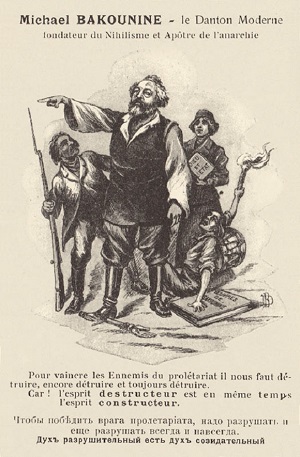

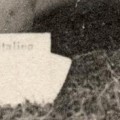
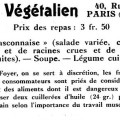
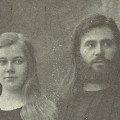

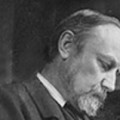
No Comments